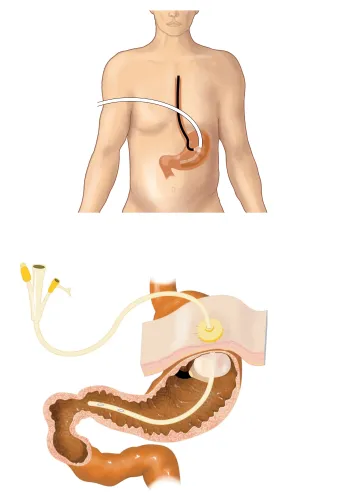10 Tips Help Every GI Practice Work More Efficiently This Year

Make a formal error-checking process to keep your practice moving smoothly. You know each carrier’s rules, you stay current on the latest GI coding updates, and you ensure that you keep all of your patient information private. You’ve arrived, right? OK, perhaps you haven’t quite arrived, but you’re part of the way there. Gastrointestinal coding is part art form, part mechanics. Collecting reimbursement for all of your services requires accuracy, persistence, and constant attention to detail. You can sail into 2020 with optimal coding, billing, and documentation processes in place by mastering 10 strategies and making them second nature. Use the tips below to make sure you’ve covered the basics of correct coding: 1. Sweat the small stuff. Understanding your carriers’ rules about how to use all the different codes and modifiers can increase your reimbursement potential. For example, you’ll want to know whether your payers want the “X” modifiers when you’re separating National Correct Coding Initiative (NCCI) edits or if they prefer modifier 59 (Distinct procedural service). 2. Give diagnosis codes more attention. Strive for the most detailed diagnosis codes you can. Additional characters on your ICD-10 codes are often required, and will improve your chances of getting reimbursed, particularly to establish the medical necessity for higher level services, says Glenn D. Littenberg, MD, MACP, FASGE, AGAF, a gastroenterologist and former CPT® Editorial Panel member in Pasadena, California. They also provide you with a greater capacity for patient tracking and disease management. “Accurate ICD-10 codes support the complexity of your patient’s primary and other medical problems, and ‘severity adjustment’ may affect capitation paid to your managed care organizations or affect the way the physician is judged on resource cost use in the MIPS program,” Littenberg says. 3. Always base your coding on medical record documentation. Be fanatical about reviewing documentation to be sure the record supports the codes selected. It helps to have all of the patient’s documentation in front of you so you can make the proper choices while you’re coding. And never assume! If you have a question about a code or a comment your physician has made in a patient’s record, do not assume what they meant. Guessing or submitting paperwork you don’t feel comfortable with will come back to bite you. Always speak with the physician when warranted. 4. Formalize error-checking. Regularly check billing reports for minor errors — before they go out — to prevent denials and payment delays. Keep a “Most Wanted” list to remind yourself of the most common errors that your practitioners are likely to make. Items like incorrectly listing a place of service, leaving off a modifier, or not matching the diagnosis code with the procedure performed can prompt a denial needlessly. 5. Be a bulldog with appeals — fight those denials. If you don’t fight inappropriate denials, you could be writing off thousands of dollars every year. Do your research and insist that carriers honor the guidelines. If you know you’re right and the guidelines support what you’re doing, you shouldn’t give up the appeals process. This can mean taking matters to a higher authority as well, whether that means a higher level of appeal, approaching the insurer’s medical director, or even going to the state insurance commission. 6. Get personal with your appeals. Your appeals should include a very personalized, directed, appeal letter. In addition to quoting from the CPT® and insurance guidelines in the documentation, personalize your appeals, ensuring that the physician describes in their own words exactly what took place during the procedure, and pinpoint the appropriate source who should receive the appeal letter. 7. Check and keep a record of carrier updates. Stay consistent with updated information: new ICD-10 codes, new National Correct Coding Initiative (NCCI) edits, MAC bulletins and explanations of benefits (EOBs). Staying current with this new information will give your practice a leg up on the road to new opportunities and out of the non-compliance ditch. Most updates come on a regular schedule, so mark your calendars to remind yourself to read these immediately upon release. 8. Run system reports to discover claims with invalid codes. Once new codes take effect, you need to check your pre-printed superbills to remove invalid codes from them, since many physicians circle these codes and then ask the patients to take the superbill to the check-out counter for payment. This is another activity you can schedule based on the ICD-10 and NCCI release calendar. 9. Document information on (upcoming) new codes. In addition to revising the old codes, anticipate the new ones. Being familiar with your carriers’ policies on new services will help you understand what documentation will be required once a new edit goes into effect. The draft versions of these policies are usually available for some time before the actual change starts. Take note of the effective date for the new codes as well. 10. Know thy carriers. Your local Medicare carriers and private insurance companies will all have their own ways of doing things. Note what they accept, what they deny, and why. What documentation do they require to approve claims? Study denials and approvals for tips on what works with whom. Keep a cheat sheet that notes any special coding instructions you should use to maximize payment and minimize denials. And get involved with their policy creation processes whenever possible.
A quick scan can tell you whether there’s news relevant to your practice or specialty. Share key updates, journal articles, or other specialty-specific materials with your billing staff to support tricky codes.




